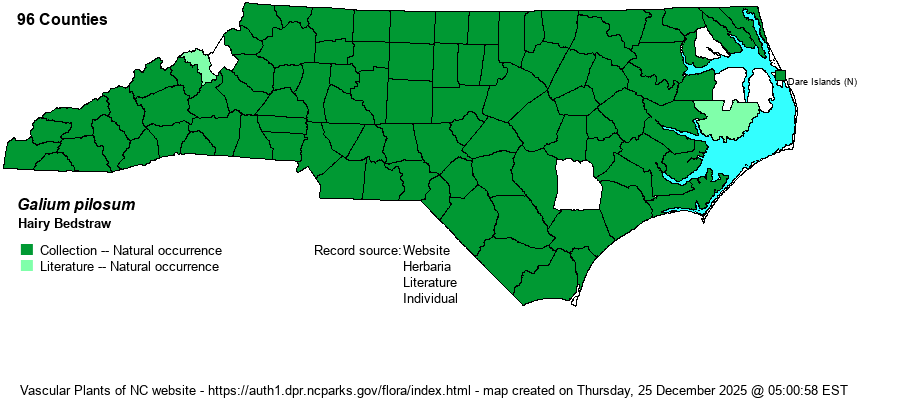| Author | Aiton | |
| Distribution | Essentially statewide, though scarce on the Pamlimarle Peninsula.
This is a widespread Eastern species, ranging from NH and MI, south to central FL and central TX. | |
| Abundance | Generally common across the state, though scarce in the eastern part of the Pamlimarle Peninsula. | |
| Habitat | This species occurs in dry to mesic habitats, favoring open upland woods, wooded margins and openings, and along roadsides. | |
| Phenology | Blooms from May to August, and fruits shortly after flowering. | |
| Identification | This is a slender herb, erect to leaning, reaching 1.5-2 feet tall, mostly unbranched or branched at the base. The stem is usually pubescent to quite hairy, as are the leaves. The stem has numerous whorls of leaves, with 4 at each node. They are elliptical to somewhat ovate, about 3/4-inch long and 1/3-inch wide, usually with a mucronate tip. The small flowers are white (though can be somewhat purple), in branched clusters from upper leaf axils; each flower is on a long and slender pedicel. There are many other Galium species with 4 leaves per whorl, but this one has pubescent leaves and stem, small leaves that are elliptical (and not linear), and many-branched flower clusters with each flower on a stalk. G. orizabense is very similar but glabrous. | |
| Taxonomic Comments | None that G. orizabense has been pulled out of G. pilosum in recent years, as a separate species.
| |
| Other Common Name(s) | None | |
| State Rank | S5 | |
| Global Rank | G5 | |
| State Status | | |
| US Status | | |
| USACE-agcp | | |
| USACE-emp | | |

